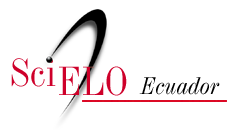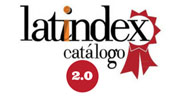Determinación de la eficiencia del aserrín y la fibra de coco utilizados como empaques para la remoción de contaminantes en Biofiltros para el tratamiento de aguas residuales
DOI:
https://doi.org/10.29019/enfoqueute.v7n3.104Palabras clave:
Tratamiento de aguas residuales, Biofiltro, Aserrín, Fibra de coco, Norma de calidad ambientalResumen
El agua es un recurso muy utilizado por la humanidad tanto para uso industrial y doméstico, la cual se descarga en la red de alcantarillado público o pozos sépticos. El presente proyecto propone una alternativa ecológica de tratamiento de aguas residuales domésticas llamada Biofiltro, que se construye de material vivo (lombrices) e inerte (viruta y grava). Al irrigar el agua residual en este filtro biológico se ha demostrado alta eficiencia en la remoción de materia orgánica y organismos patógenos. El trabajo de campo se llevó a cabo con Biofiltros experimentales en los que para obtener mejores condiciones se hizo variantes en la estructura del material inerte. Se realizó dos Biofiltros pilotos, uno con empaque de aserrín y otro con empaque de fibra de coco en los que se hizo el tratamiento de agua residual doméstica, se tomó muestras del efluente tratado en cada reactor y fueron sometidas a pruebas de laboratorio. El análisis e interpretación de resultados arrojaron que la eficiencia en la remoción de contaminantes del Biofiltro con aserrín es del 53.53 % y está fuera de la norma, y del Biofiltro con fibra de coco es del 82.37 % y está dentro de la norma de Calidad Ambiental y de Descarga de Efluentes: Recurso Agua.
Descargas
Referencias
Arango, J. (2003). Evaluación ambiental del Sistema Tohá en la remoción de Salmonella en aguas servidas domésticas. Universidad de Chile. Santiago de Chile, Chile: Biblioteca de la Universidad de Chile.
Carmona, C. (2010). Estudio del Comportamiento de una Mezcla de Aserrín y Grasa Láctea de Desecho. Universidad Austral de Chile. Valdivia, Chile: Biblioteca de la Universidad Austral de Chile.
Castillo, F. (2005). Biotecnología Ambiental. Madrid, España: Tébar.
FAO. (2014). Agua residual. Recuperado el 10 de febrero de 2014, de sitio web de AQUASTAT: http://www.fao.org/nr/water/aquastat/data/glossary/search.html?lang=es&_p=100&submitBtn=-1&keywords=Agua+residual&subjectId=-1&termId=-1&submit=Buscar
Guzmán, M. (2004). Estudio de factibilidad de la aplicación del Sistema Tohá en la planta de tratamiento de aguas servidas de Valdivia. Universidad Austral de Chile. Valdivia, Chile: Biblioteca de la Universidad Austral de Chile.
Hernández, Y. (2005). Anteproyecto de construcción para aplicación de Lombricultura al tratamiento de planta Llau-Llao de Salmonera Invertec S.A. Universidad Austral de Chile. Valdivia, Chile: Biblioteca de la Universidad Austral de Chile.
Masters, G., & Ela, W. (2008). Introducción a la ingeniería medioambiental. Madrid, España: Pearson.
Ministerio del Ambiente. (31 de marzo de 2003). Norma de calidad ambiental y descarga de efluentes: Recurso agua. Texto Unificado de Legislación Ambiental Secundaria del Ministerio del Ambiente. Quito, Ecuador.
Reckmann, O. (2011). Fibra de coco un sustrato con grandes ventajas. Redagrícola, 80.
Salazar, P. (2005). “Sistema Tohá; una alternativa ecológica para el tratamiento de aguas residuales en sectores rurales". Universidad Austral de Chile. Valdivia, Chile: Biblioteca de la Universidad Austral de Chile.
Publicado
Número
Sección
Licencia
Los autores retienen todos sus derechos (© copyright).
- Los autores retienen sus derechos de marca y patente, y también sobre cualquier proceso o procedimiento descrito en el artículo.
- Los autores retienen el derecho de compartir, copiar, distribuir, ejecutar y comunicar públicamente el artículo publicado en Enfoque UTE (por ejemplo, colocarlo en un repositorio institucional o publicarlo en un libro), siempre que se dé el reconocimiento de su publicación inicial en la revista Enfoque UTE.
- Los autores retienen el derecho a hacer una posterior publicación de su trabajo, de utilizar el artículo o cualquier parte de aquel (por ejemplo: una compilación de sus trabajos, notas para conferencias, tesis, o para un libro), siempre que indiquen la fuente de publicación (autores del trabajo, revista, volumen, número y fecha).
























